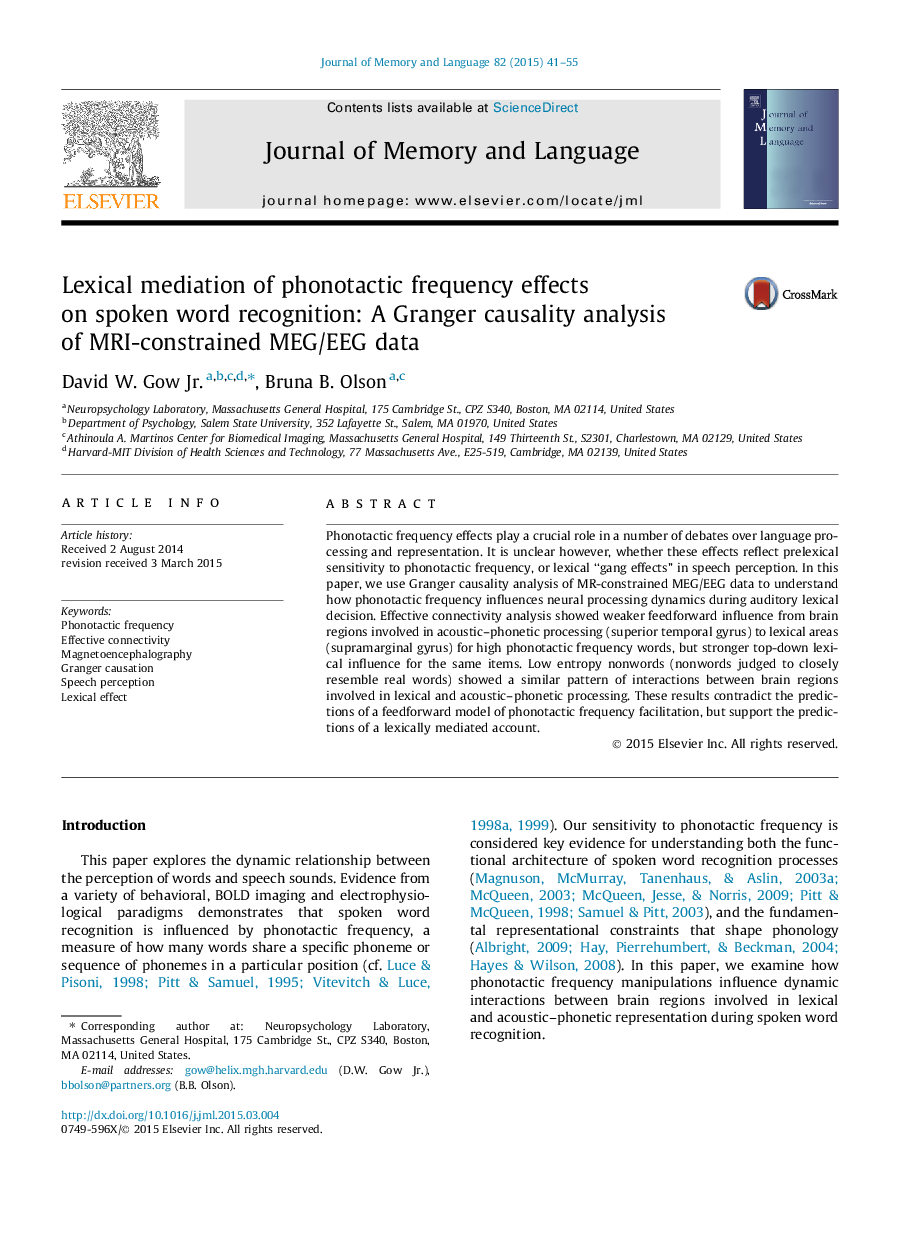| Article ID | Journal | Published Year | Pages | File Type |
|---|---|---|---|---|
| 7297058 | Journal of Memory and Language | 2015 | 15 Pages |
Abstract
Phonotactic frequency effects play a crucial role in a number of debates over language processing and representation. It is unclear however, whether these effects reflect prelexical sensitivity to phonotactic frequency, or lexical “gang effects” in speech perception. In this paper, we use Granger causality analysis of MR-constrained MEG/EEG data to understand how phonotactic frequency influences neural processing dynamics during auditory lexical decision. Effective connectivity analysis showed weaker feedforward influence from brain regions involved in acoustic-phonetic processing (superior temporal gyrus) to lexical areas (supramarginal gyrus) for high phonotactic frequency words, but stronger top-down lexical influence for the same items. Low entropy nonwords (nonwords judged to closely resemble real words) showed a similar pattern of interactions between brain regions involved in lexical and acoustic-phonetic processing. These results contradict the predictions of a feedforward model of phonotactic frequency facilitation, but support the predictions of a lexically mediated account.
Related Topics
Life Sciences
Neuroscience
Cognitive Neuroscience
Authors
David W. Jr., Bruna B. Olson,
